In Podcast 26 I spend a week in India, visiting a charity project that I support through my church here in Bristol. From Hyderabad we travelled to Kurnool with our contact Father Pratap Reddy and visited some of the villages where he is supporting the education of the poorest children and developing community projects to help the people there. You’ll hear about our visits to schools, hostels and rural villages seeing for ourselves how donations from overseas were being used and making a big difference to people’s lives.
Podcast: Play in new window | Download
This article may contain affiliate links that provide commission on purchases you make at no extra cost to you. As an Amazon Associate I earn from qualifying purchases.
Day 1 – Shopping and sightseeing in Hyderabad
In Hyderabad we stayed at the lovely Mercure Abids Hotel that was booked through AsiaRooms.com in a neighbourhood that has plenty of small local shops, selling clothes and jewellery. We took a Tuk Tuk across the river to the Charminar district which is one of the older districts of Hyderabad where we climbed up the famous Charminar monument, to get a view over the city. I soon realised that not many European tourists visit Hyderabad, when two different Indians visiting the monument asked to have their photos taken with me as if I was a rare and exotic creature that they only see very rarely.
With my friends Marilyn & Robert I walked down the road past all the shops selling jewellery and brightly coloured bangles, and we found ourselves near the Chowmahalla Palace built in the 18th century for the Nizams or rulers of Hyderabad to entertain their guests. The white palace buildings were set around two large courtyards with lawns and fountains, and we walked through some of the rooms, including the throne room with enormous sparkling chandeliers that were designed to impress.
After lunch back at the hotel, we were picked up by our contact, Fr Pratap Reddy who drove us the three hours south to Kurnool. The landscape was a dry, arid scrubland with not much to see other than a few fields and rice paddies being cultivated wherever there was a source of water for irrigation. Every so often there might be a field of chilli plants speckled with red, or cotton bushes and mango trees in flower. It seemed to be harvest time and we saw many carts heavily loaded with hay, including one that had tipped over and was blocking half of the 2 lane highway. As we got closer to Kurnool, Father Pratap pointed out the river that had flooded in 2009 and overflowing its banks after unexpectedly high rainfall and causing a disaster when water and mud flowed into the major town destroying shops and businesses.
Day 2 – Meeting sponsor children in Nandikotkur
We stayed for the next 3 days at a hotel in Kurnool and from there Father Pratap took us to see various community projects that he had started. On our first morning at the Parish House at Nandikotkur, we met some of the children whose education was being sponsored by families in the UK. I had met Fr Pratap over 15 years ago through my church when he was visiting the UK making appeals for help in his parish and as he had been back to the UK a number of times, I set up a small charity to channel the fundraising efforts. Together with my friends Marilyn and Robert who are also involved in the charity, we were there to see how the money raised had been used.
The sponsorship is normally used to pay for books, uniforms and other school expenses for the children from poorer families whose parents may find it difficult even to pay the small amount for schooling. By the time we arrived at the parish house, there were already some children there with their parents, who had travelled for 3 or 4 hours to meet us, which we really appreciated. Some had come from Father Pratap’s old parish of P. Yaleru and others who were attending school nearby came to meet us in their school lunch break, as they were in the middle of exams. I was thrilled to meet my sponsored child Neelima, who had come with her brother and father some distance to meet me. You can read my article about meeting my Indian sponsor child here.
We quickly developed an approach to meeting these groups of sponsor children, who might only speak a few words of English and of course our Telugu was pretty limited! Sitting in a circle, I would pass around an album of photos of my family, telling them who everyone was and what they were doing, to give a sense of connection from my family to their family. We also gave them some postcards of Bristol, pointing out the key landmarks of our city, such as the Clifton suspension bridge, the balloons floating over Bristol, and the ships in the harbour. We’d brought with is some small gifts such as toiletries or stationary and we also took loads of photos as each child to give to their sponsors in the UK who love to see different photos of their sponsor child growing up.
After lunch we went to have tea with the nuns who live on the school campus, as each of the Catholic schools would typically have a house with 4 or 5 nuns who work as teachers and run the school. It was fascinating to talk to them about their lives, as many are in their 20s and 30s and come from all over India, moving around every few years. Both the priests and nuns learn to speak good English which they need to communicate in different parts of India, as different languages may be spoken in each state. English medium schools, where most of the lessons are taught in English are becoming increasingly popular, because speaking English increases your job prospects and means that you can get business jobs in different parts of India.
We walked around one of the smaller, rural villages which was part of Father Paratap’s parish. One of the main things they wanted to discuss with him was how they could get more bore wells, as there is little standing water and so the wells are required in order to irrigate the crops. The rains only come for one month of the year, allowing crops to be grown for a short season, but if well water is available the growing season is extended and the farmers can increase their income. The problem is that these deep tube wells are very expensive to drill, each one costing over £1000 and even then the supply of water is limited to how much can be pumped up when the power supply is available, in the morning and evening.
That evening we attended a presentation with the children from the school boarding hostels – 75 girls and 40 boys. They stay in the hostels beside the school in term-time, with their parents visiting them at weekends, since their villages are too far for them to travel to school daily. We were treated to speeches of welcome and the children performed dance routines for us, the boys in high energy Bollywood style, the girls with some graceful traditional dances. At the the end of each dance they pulled us up out of our seats in order to make us dance with them, causing much laughter at our efforts to copy them.
Day 3 – A return visit to the village of P. Yaleru
Eight years earlier we had visited Father Pratap in his parish of P. Yaleru and now it was time to make a return visit. We drove the three hours from Kurnool to Anantapur on an excellent two lane highway with only the occasional heart-stopping moment when we met an ox cart driving towards us in the wrong direction in one of those “Only in India” moments. We stopped at the town of Anantapur to buy sweets for the children and then continued to Holy Spirit school at Atmakur, where we were expected for lunch with the nuns. Father Pratap told us how this English Medium school had been started some years ago with only 100 children and proved so popular that it had now expanded to teach 700 pupils.
We had innocently turned up thinking it was to be a passing visit, but after lunch we were invited to a whole school assembly, which featured a major song and dance presentation. We sat on the stage at the front while the children came up to perform a series of dance routines, while teachers held their mobile phones to the microphone to amplify the Indian pop music. Next came speeches in which we were thanked for giving up our valuable time to visit the school and I was then handed the microphone to ad lib a similar speech in which I congratulated the children on their wonderful dancing. We toured all the classrooms to distribute the sweets that we had brought, although of course we had completely underestimated the number of children, having only enough sweets for half the school and had to leave a donation so the rest of the school could have their sweets later!
Driving on to the village of P. Yaleru we noticed that the rutted dirt track that we had travelled along previously had been replaced by a new road. The dome of the new church that had been completed just before our last visit rose above the treeline as we approached, with a tiered design which looked a bit like a wedding cake. The current parish priest, Father Joseph, welcomed us and showed us some of the new projects such as a water pumping and filtration station to give clean water drinking water for the village. The land around the new church had been a building site on our last visit, but now a wall had been built and gardens planted with coconut palms which generated income for the parish.
Behind the church was a water tower which ensured a continuous water supply, as the power to pump the water from the bore well is only available at certain times during the day. As we walked around the village, we could see how many of the old style mud and stone houses with thatched roofs had been replaced by new style concrete houses which although small are cleaner and more modern. A typical family house might have one room with high shelves around the walls to store cooking pots and other possessions, and sometimes a second smaller room which was used as a kitchen and store-room. Finally we walked around the plantation of 1200 mango trees which was now 5 years old and providing some income to support the parish and the education of the children. The bore well had been drilled to provide drip irrigation for the trees and Father Pratap told us how he had to drill seven times for the well before they finally struck water which was a great relief, as many people thought he was crazy to keep trying. Little by little all these projects had brought improvements to the families of P. Yaleru.
Day 4 – Visiting the stone polishing factory
On the next day, Father Pratap took us to visit a stone polishing factory which he had started in a previous parish. As we drove closer, the landscape became more rocky and we could see the waste stone from the quarries littering the hillside. In the town we drove past many businesses with the stone stacked up at the front, ready to use as flooring for houses. We pulled up at the factory and were met by a deputation who greeted us with garlands and led us into the factory. A group was drumming and singing and we sat down to hear a speech by one of the community leaders, which was translated for us, in which he told us how the project had changed their lives. We learned that it had been a major undertaking to raise a loan for the land, get the necessary permissions and deal with all the beau acracy, but that now their incomes have been much improved because of this project.
The factory is a co-operative for the benefit of a number of families and at the start there was just one building and a few polishing machines, but over the years this has multiplied. There are individual owners for each stone polishing or cutting machine, and the owner then employs others to operate the machines, sharing the profits 60% to the machine owner and 40% to the workers. It was heavy, physical work with the stone being trimmed by a circular blade and then polished with a rotating metal plate which the operator moved around with their body. I was a bit worried to see the operators with very little protective equipment and hoped that they would not be so distracted by our taking their photos that a finger would be sliced off or a toe crushed underfoot.
Returning to the parish house, I had asked Father Pratap if he could arrange for me to stay with a local family on my last night. However, I was feeling a bit apprehensive after visiting villages where whole families would live in a single room house, with little in the way of bathroom facilities, and wondered what my night would be like. However, Father Pratap had obviously anticipated this and placed me with a family who were better off than many of his parishioners and offered me my own room with an adjoining bathroom, although I later realised they had probably given me their own bedroom. I spent the evening chatting to them and their grandson, who spoke some English, and looking at family photos of their two daughters, one of whom was a teacher in Kurnool, the other who was in the USA with her husband.
My interview with Father Pratap Reddy
You’ll hear my interview with Father Pratap Reddy who told me more about the lives of the families that he supports in his parish. He has nine village outstations within 15 km of the parish house, with many families who work as agricultural labourers or in stone quarries, earning less than £1 a day. On this kind of income they have barely enough to eat, and for any other expenses they might have to take a loan and commit themselves to working for the lender until the loan is paid off. The government schools in the villages are “not up to the mark”, so the Catholic church runs schools and also boarding hostels where the children stay. The parents can’t afford to send their children to school by bus and by staying in the hostels the parish covers their living expenses which prevents the children going out to work with the parents rather than being in school.
Reflections on our visit
On my return to Hyderabad I reflected on the three intense days we’d had; we met children, families, we were danced to, drummed to, sung to, it was an amazing experience. If you are travelling in a place like India and come across any projects that need your support, I urge you to get involved and make a personal connection. You may start out by thinking that you are the one doing the giving, but by the end you will feel that you have received an incredible amount from the experience and that was certainly my feeling during my visit to India.
More stories from my trip to India
Meeting my Indian Sponsor child – Neelima and her family
Meeting my Indian Sponsor child on a previous visit
This article is originally published at Heatheronhertravels.com


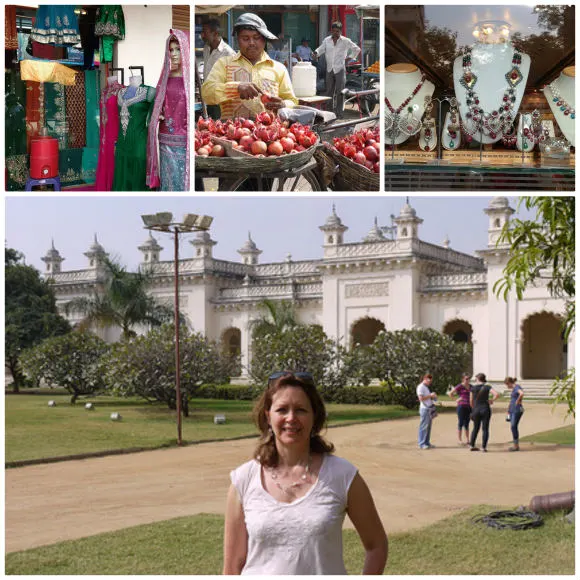
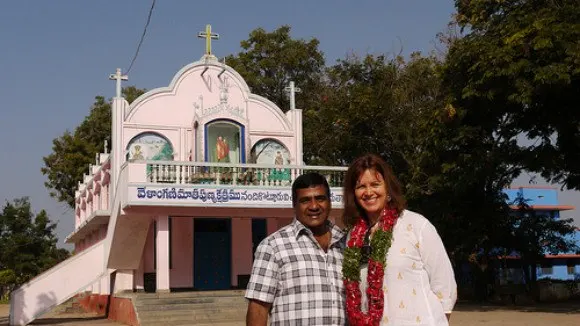
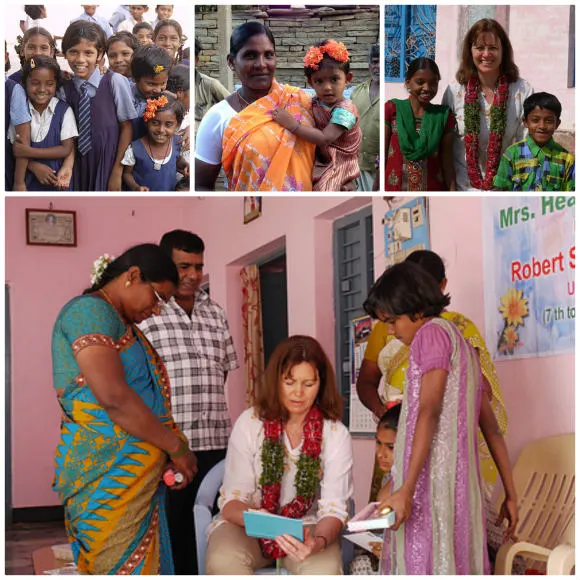
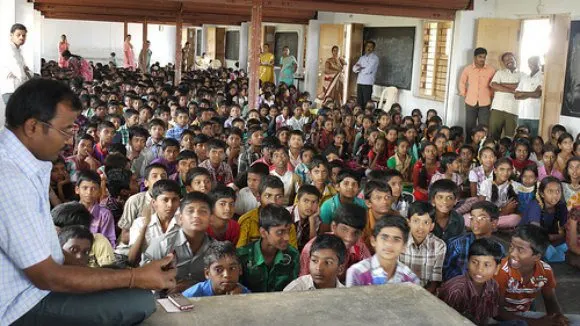
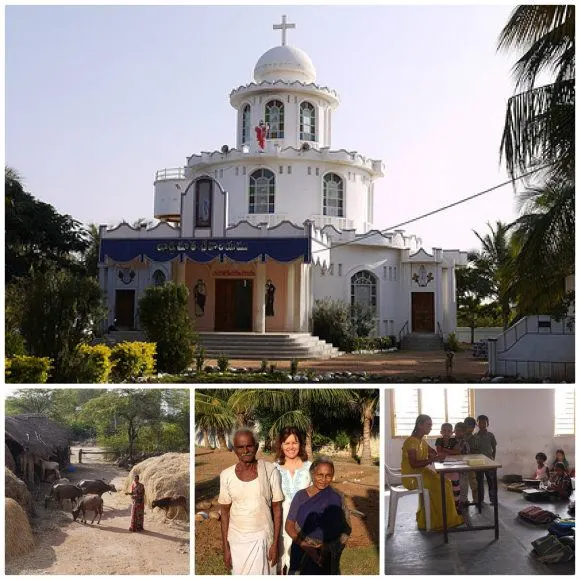
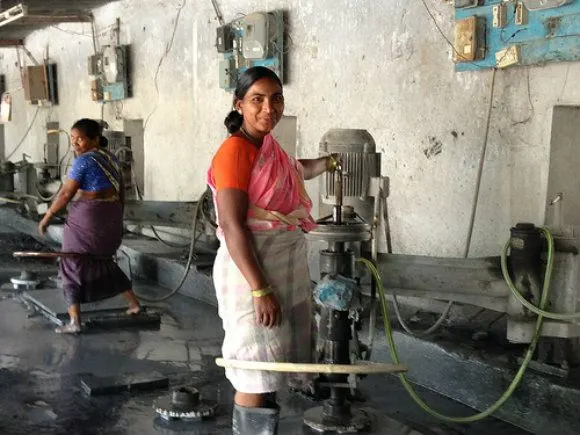
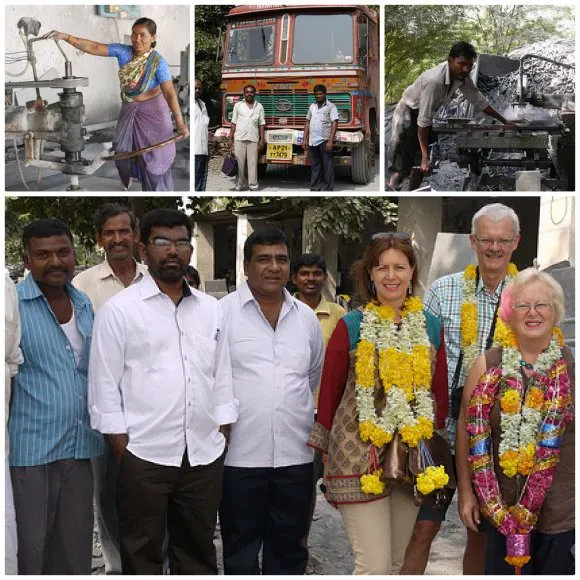
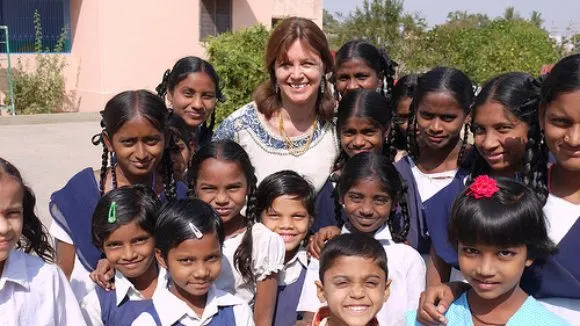

monisha
Saturday 31st of May 2014
You are doing really good job heather and don't stop it for any cause, surely you will deserve some best things in your life. keep doing this type of charitable events to those who wanted.
Heather Cowper
Saturday 31st of May 2014
@Monish Thanks for your kind comment
ishaguptas
Thursday 29th of May 2014
Nice job heather. keep doing this kind of charitable events in your life. surely it will make some good things to poor peoples.all the best for your work.
Heather Cowper
Thursday 29th of May 2014
@ishaguptas thanks for your kind comments
Raj
Wednesday 12th of March 2014
Heather, you are doing good job. my all best wishes with you....
Wesley
Tuesday 14th of January 2014
Well done, it sounds amazing.
Heather Cowper
Tuesday 14th of January 2014
@Wesley Thanks, I've found my visits to India very personally rewarding through my charity involvement
Luxury car rentals
Saturday 28th of December 2013
Hyderabas is one of the historical places in the world with great people and culture